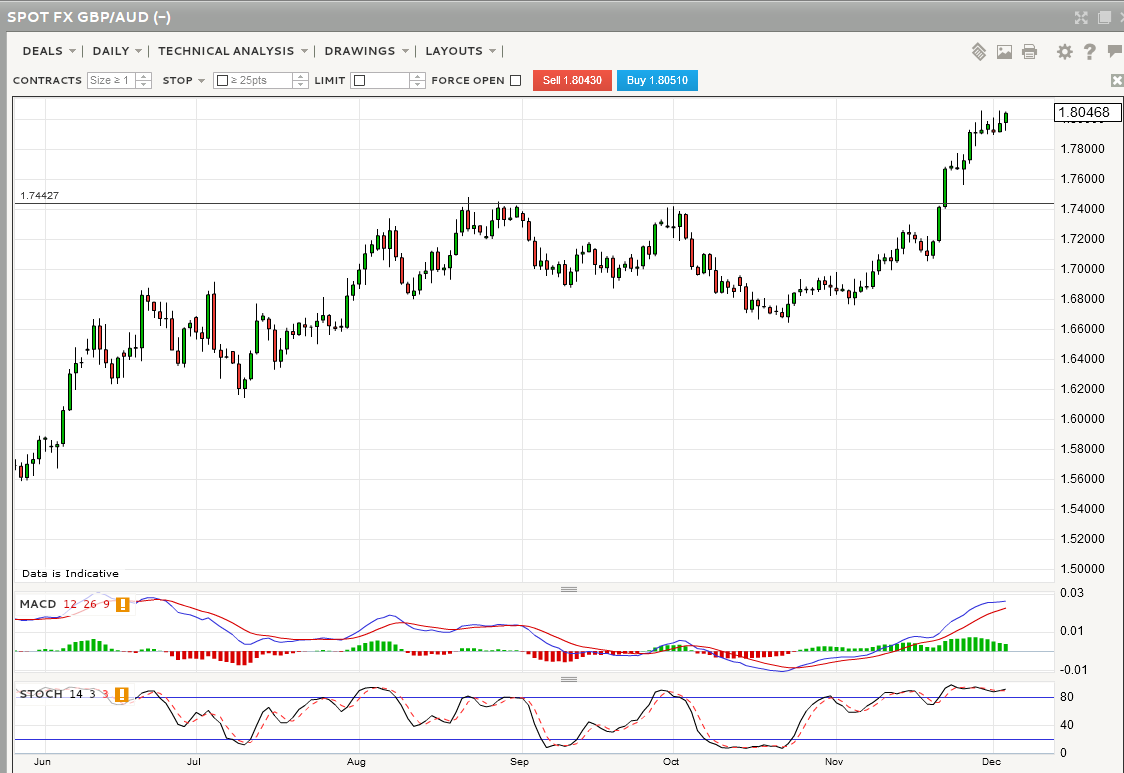
Aligning yourself to the views and policies of central banks is a trade that has worked well for much of 2013 and for pure technical traders this view is merely reflected in the underlying trend anyhow. Technicals are clearly reflective of fundamental divergence among central banks right now, although bond yield spreads are also aiding pricing action.
So if a central bank has an easing bias, the market simply wants to be short that pair (think RBA, BoJ and the BoC to a degree). If a central bank is altering policy to be more neutral, or even hawkish (think RBNZ) the market will have a preference to be long those currencies. It’s a question of marrying up the right ones and getting in and out at the right time.
One of the pairs that has exerted the clearest signs of these thematic has been seen has been GBP/AUD, although the same can be said in GBP/JPY and GBP/CAD. GBP/AUD however, has rallied over 25% from the year’s low, which given the leverage in the market is absolutely huge and has been a trend followers dream. As said in a number of reports through the year, when this pair trends, it really can trend.
Today’s Q3 GDP print at 0.6% (qoq) and 2.3% (annualised) has pushed the pair to print a higher high, however we will need to see a break of 1.8080 for the stochastic’s to also print a higher high and avoid potential divergence on the daily chart. Divergence can signal exhaustion and a potential reversal.
What’s clear here is the market feels the BoE are likely to hike rates in 2014, although this is in disagreement from recent statements from the BoE. On the other hand the market is not only looking at a non-urgent easing bias from the RBA, but also at 2.3% sub-trend growth that could lead to lower inflation forces and cause the RBA to cut again in 2014. Clear policy divergence. The question we ask is what is going to cause this trend to break?